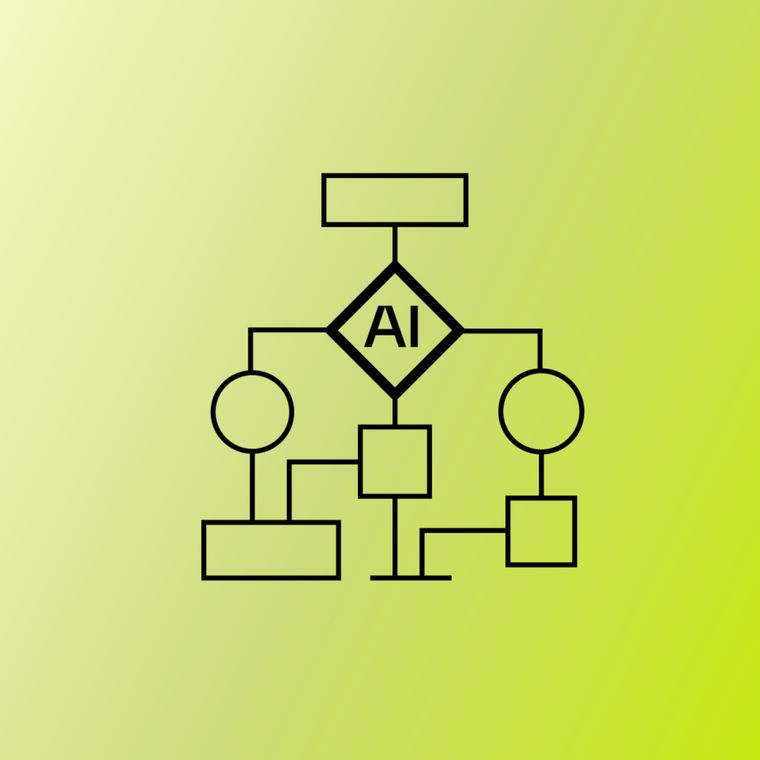7 Hidden Signals Hybrid Analysis Detects Before an Attack Hits
Uncover the early warning signs hybrid analysis reveals—weeks before traditional tools catch threats.
July 15, 2025
Hybrid analysis detects threats earlier than traditional tools by combining static code inspection with live sandbox observation. Signature-based detection often misses the subtle signs that attackers leave behind, such as phishing links that quietly harvest personal data before triggering alerts.
This method examines files twice: static analysis parses the binary for risky imports and anomalies, while dynamic analysis runs the sample in a sandbox to record system calls, registry edits, and network activity. Machine learning correlates both views to surface malicious intent before damage occurs.
The result: a shift from reactive cleanup to proactive containment. You block loaders before injection and quarantine processes before they reach command-and-control.
The seven signals that follow are early indicators this approach detects first—each a chance to stop an attack before it starts.
1. Suspicious Process Injection Attempts
Process injection attacks hide malicious code inside trusted processes, but hybrid analysis exposes these attempts before they establish persistence. Adversaries use techniques like remote thread creation, DLL injection, and APC queuing to execute payloads under the cover of legitimate binaries.
This detection method reveals injection from two angles:
- Static inspection flags:
Binaries importing high-risk APIs like WriteProcessMemory, NtQueueApcThread, and SetThreadContext
References to shellcode buffers in plain text
- Dynamic execution confirms intent by recording:
Cross-process memory writes
Unexpected child processes spawning from explorer.exe
Threads whose start addresses sit in freshly allocated memory
Injection techniques most commonly occur during the Exploitation or Installation phases, so early identification can help neutralize payloads before privilege escalation. When process injection is detected, take immediate action by quarantining any executable that the sandbox tags with cross-process memory writes.
Automatically push hashes, parent–child process pairs, and suspect API sequences to your EDR so future sightings trigger isolation. Feed resulting indicators of compromise into your SOAR playbooks to disable affected user accounts and block outbound connections within seconds.
These controls deprive attackers of the stealth beachhead they rely on for the rest of the kill chain.
2. Unusual API Call Sequences
Malware reveals its intent through Windows API call sequences that deviate from legitimate software patterns, exposing threats before payload execution.
Threat actors often allocate memory with VirtualAlloc, write shellcode, then launch it with CreateThread, deliberately skipping legitimate initialization paths to sidestep inline hooks.
This analytical approach surfaces these anomalies in two complementary passes. Static inspection quickly lists imports such as VirtualAlloc, WriteProcessMemory, or NtQueueApcThread, highlighting code with high exploitation potential. Dynamic detonation then traces the real-time call stack, recording the exact chronology and arguments.
To operationalize these insights, baseline legitimate API sequences for your critical applications, store them in a controlled lab environment, and feed the results into your SIEM.
Your team should capture and whitelist normal sequence graphs for high-value binaries, configure the sandbox to auto-alert whenever it observes out-of-order calls that differ from the baseline, and push anomalies to your SIEM.
Then trigger SOAR playbooks that quarantine the binary, enrich the incident with real-time API anomalies, and block the hash across EDR.
3. Unusual Registry or Configuration Tampering
Behavioral analysis identifies stealthy registry and configuration modifications immediately, enabling you to eliminate persistence mechanisms before attackers establish control.
Attackers consistently write auto-start commands into keys like HKCU\Software\Microsoft\Windows\CurrentVersion\Run, abuse AppInit_DLLs, or schedule hidden tasks that respawn malware after every reboot. These modifications evade signature scanners but become trivial to identify when you correlate code intent with real-time behavior.
During static analysis, detection tools flag binaries that reference registry APIs (RegSetValueEx, RegCreateKeyEx) or embed hard-coded paths to startup keys. Even packed code reveals suspicious strings and command-line arguments through metadata extraction. Dynamic analysis executes the sample in a sandbox and records live events—new keys appearing, values changing to "1", or services reconfiguring.
Both perspectives feed the same engine, delivering a single verdict enriched with timeline data that explains exactly when and how persistence was established. This approach dramatically reduces false positives compared to standalone static scanners.
Tampering occurs during the Persistence stage of the kill chain. Deleting these keys before the next reboot cuts dwell time from weeks to minutes. Automate your response by configuring Group Policy or Intune scripts to roll back unauthorized keys, enable Sysmon event IDs 13 and 14 for continuous monitoring, and push high-confidence indicators into your SIEM so compliance dashboards reflect instant remediation.
4. Stealthy Command-and-Control (C2) Beaconing Patterns
Combined static and dynamic analysis catches C2 beaconing patterns through timing anomalies and behavioral signatures that perimeter tools miss entirely. Static inspection reveals hard-coded domains, IPs, and encrypted strings that map to known C2 infrastructure. Even obfuscated strings leave traces—entropy spikes and suspicious section headers flag them for deeper review.
Dynamic detonation confirms malicious intent by recording the actual communication attempts. The sandbox captures periodic HTTP POSTs, DNS TXT lookups, or small TLS sessions that repeat at suspiciously regular intervals. Over extended observation windows, these packets align into the "heartbeat" pattern attackers need for remote control.
Modern payloads frequently use frameworks like Cobalt Strike, and detection tools specifically watch for their staging commands—initial sleep timers, jitter configuration, and encrypted metadata exchanges. Detecting this sequence in the sandbox confirms a live C2 channel rather than benign background traffic.
Beaconing sits at the Command and Control phase of the kill chain. Severing it here eliminates the attacker's hands-on access before any data leaves your network. Feed the domains and JA3 hashes your sandbox uncovers into DNS sinkholes or egress firewalls. Enrich threat intelligence feeds and replay the indicators in purple-team simulations.
5. Packed or Obfuscated Executables Unpacked at Runtime
Dual-phase analysis stops packed malware before detonation by linking static entropy spikes to live unpacking behavior that traditional scanners miss. When a sample arrives, the static engine calculates section entropy and flags segments whose randomness betrays compression or encryption.
It highlights misshapen PE headers—tiny import tables, stubbed entry points, or section names like ".themida"—that signal packers such as UPX or custom loaders, all without executing a single instruction.
The moment the file runs inside the sandbox, dynamic monitoring takes control. The executable calls VirtualAlloc to reserve memory, copies opaque blobs into that space with WriteProcessMemory, and redirects execution with CreateThread. Seconds later, a clean, fully formed PE image appears on disk or in memory—conclusive evidence of runtime unpacking.
Capturing the payload at the moment it reveals itself enables immediate extraction of the unpacked binary, YARA rule generation, and fresh indicator feeds into your EDR. Configure the sandbox to auto-export every dumped image and trigger a SOAR playbook that quarantines hosts before attackers weaponize their code.
6. Environment Discovery & Sandbox-Evasion Behavior
Malware that probes its environment before executing payloads signals sophisticated attackers, and behavioral analysis catches these reconnaissance attempts in real-time. Attackers deploy code that calls wmic, reads CPUID registers, or checks registry keys like HKLM\HARDWARE\ACPI\DSDT\VBOX__ to detect analysis environments. Static inspection reveals telltale strings—IsDebuggerPresent, VBoxService, vmtoolsd.exe—and flags functions that query system time or search for analysis tools.
Dynamic tracing records the actual behavior: conditional branches that stall execution when virtual machine artifacts surface, extended sleep loops that outlast typical detonation windows, or sudden termination when expected user input never appears.
These checks indicate human-operated or nation-state campaigns that demand immediate triage.
Randomize sandbox fingerprints by rotating VM UUIDs, installing decoy applications, and varying user profiles to bypass environment checks. Seed the sandbox with scripted mouse movement and keystrokes to neutralize interaction gates.
Feed every anti-analysis IOC—suspicious registry paths, timing anomalies, failed privilege checks—into your threat-hunting platform to sweep production systems for identical behavior.
A modern integrated approach correlates static red flags with runtime evasion, reducing false positives while surfacing high-risk samples early. Environment discovery detection intercepts advanced adversaries before their payloads leave staging.
7. Privilege Escalation Preparations
Behavioral analysis detects privilege escalation attempts by correlating static code indicators with dynamic runtime behavior before attackers gain elevated access. Static inspection reveals embedded exploit code, suspicious syscall imports, and driver hashes, while dynamic monitoring captures failed privilege checks, calls to AdjustTokenPrivileges, and unsigned driver installation attempts.
Static analysis flags hard-coded CVE exploit stubs and kernel-mode drivers that have no place in business software. When the sample executes in the sandbox, memory analysis captures token stealing routines and service creations that bypass User Account Control. Process telemetry reveals parent-child chains inconsistent with legitimate admin tools. Mapping these events to MITRE ATT&CK techniques provides immediate context for containment.
This early detection capability delivers proactive defense against threats before damage occurs. Feed detected CVE references directly to vulnerability management systems so patches deploy within hours, not weeks. At the endpoint, enable just-in-time admin controls that grant temporary privileges only when business policy allows—neutralizing token manipulation and rogue driver loads.
Automated playbooks that quarantine binaries, revoke tokens, and isolate hosts dismantle escalation attempts while they remain exploratory, preserving uptime and organizational trust.
Early Signals Turned Into Enterprise-Wide Protection with Abnormal AI
Detecting hidden signals across files and systems is only part of the story. Abnormal AI brings this same hybrid analytical rigor to the cloud layer, where attackers now move fastest. Our platform continuously models behavioral baselines across email, collaboration tools, and cloud infrastructure to flag the same kinds of subtle deviations—such as unusual privilege use, suspicious file activity, or unexpected access chains—before an attack unfolds.
By linking hybrid threat detection with AI-driven behavior modeling, Abnormal turns early warning signals into real-time protection. Request a personalized demo to see how Abnormal exposes threats weeks before traditional tools catch up.
Related Posts
Get the Latest Email Security Insights
Subscribe to our newsletter to receive updates on the latest attacks and new trends in the email threat landscape.


